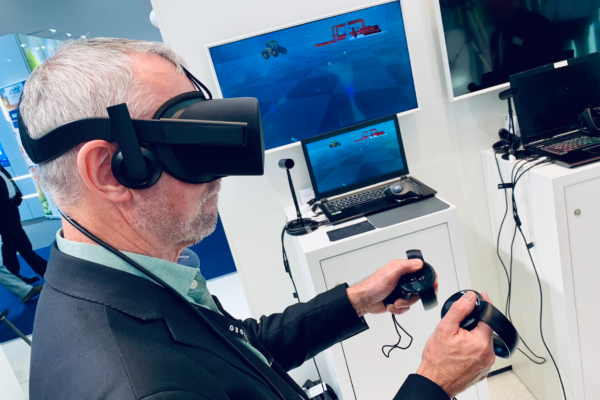This week has brought the sad news – which many of us feared would emerge at some point – that the XXIVth ISPRS Congress in Nice is postponed for another year. Another highlight to suffer the same fate is the 58th Photogrammetric Week in Stuttgart. ISPRS, however, will run a virtual event this summer. Meanwhile, ASPRS is gearing up for its own 2021 virtual conference, but will co-locate with Geo Week in Denver in February 2022. So we will eschew travel for a bit longer, hunkered down with Zoom and its congeners, but gird our loins for an extremely active 2022. Geo Week, of course, will include not only ILMF but also SPAR 3D and AEC Next, with ASPRS and USIBD running their events alongside.
Online is the new norm for conferences, research and product announcements, professional update and training. I’ve said several times here that the quality remains high and we can gain a great deal by judicious choice from the huge menu. I’ve enjoyed five well prepared events in the last couple of weeks. Two were courtesy of ASPRS. The Society runs webinars called Geo Bytes, which are free to members and available to non-members for a nominal charge. The 29 January one featured Prof. Eric Delmelle of University of North Carolina Chapel Hill describing his research on vector-borne diseases, with quite complex space-time modeling enabled by parallel computing. This had nothing to do with lidar, but we care, because not only could his work in Colombia be of value to epidemiologists and first responders, but it can be applied to covid. On 2 February, the very active Pacific Southwest Region of ASPRS ran an online event, which, in happier times, would have been part of the annual Geomatics Engineering conference at California State University Fresno. First on was Prof. Riadh Munjy of CSU Fresno, giving an update on his accuracy investigation of UAV-lidar, joint work with Caltrans, on which he had previously reported at the ASPRS virtual conference last summer. He was followed by Dr. Reuben Settergren of BAE Systems, a former colleague of mine, describing work that had first been aired during the ISPRS virtual conference, also last summer. In a “rediscovery” of some of the most basic yet powerful photogrammetric concepts, Reuben used vanishing points and monoscopic measurements of straight lines on single photos to measure the idiosyncratic Volkswagen Thing. Great stuff!

Editor Walker navigates a virtual environment at INTERGEO 2019, courtesy of Present 4D.
Two commercial webinars were also worth joining. On 27 January, lidar guru Lewis Graham of GeoCue, one of our regular contributors, gave a superbly executed webinar, “A pragmatic approach to entering the drone lidar business”. This was full of straightforward advice, borne of experience, supported by beautifully organized slides. Certainly, there were several mentions of the GeoCue True View sensor, but this was not the star of the show and any readers with a yen to take their companies into UAV-lidar – or start up companies to play in that space – would do well to absorb Lewis’s advice. The following day, I was again glued to my screen, listing to Simon Grandin, spécialiste en photogrammétrie chez SimActive Inc., giving a training session on his company’s Correlator3D software entitled, “Processing large drone projects”. This was about imagery, but Correlator3D ingests lidar OK and Simon touched on this.
If you want more product detail, Geo Cue will be talking about its new model, True View 515, on 24 February. The company’s “3DIS” nomenclature – 3D imaging sensor – has proved to have legs and is now a registered trademark.
As always, let me end on a lighter note. On 4 February, I tuned into a rather different webinar, provided by The Economist as a treat for its subscribers: “An audience with Ann Wroe, obituaries editor”. This was run in Q&A form with Sacha Nauta, The Economist’s public policy editor in Amsterdam. Ann is quite good (MA DPhil Oxford in history and author of several books) and her account of the weekly efforts to publish an accurate, compelling obituary held the attention. A 44-year veteran of The Economist, she has written the obituaries since 2003. I was able to use the chat to applaud my own favorite obituary, of Alex the African grey parrot, died 6 September 2007, age 31. How she put together last week’s obituary of Soviet air force general Nikolai Antoshkin – the man who put out the fire at Chernobyl – was a lesson in diligence, practicality and a dash of imagination!
Let’s look forward to a return to an element of normality in 2022, therefore, but in the meantime applaud those who provide us with a cornucopia of invaluable online content. Whether you’ve been vaccinated or are still waiting, take care and stay safe.